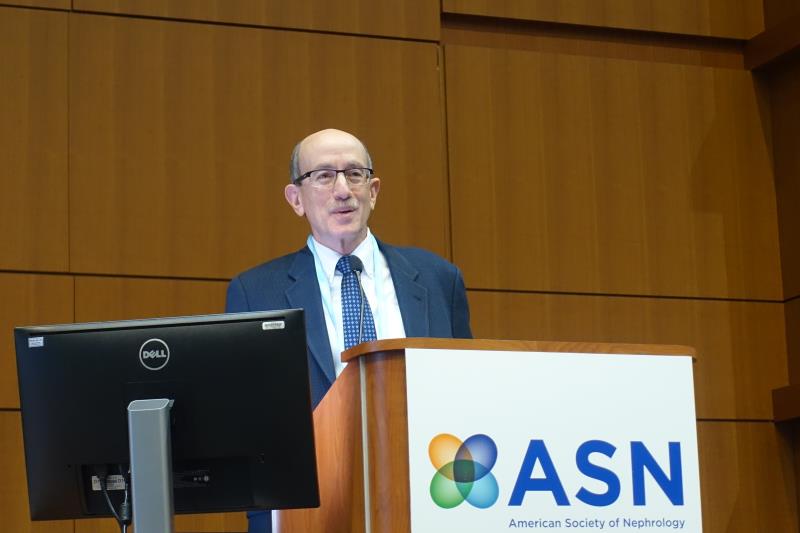 Dr Steven Fishbane
Dr Steven FishbaneThe novel agent difelikefalin significantly reduced itch intensity and improved itch-related quality of life among patients on haemodialysis in the phase III KALM-1 study.
“Chronic kidney disease [CKD]-associated itching is a common and distressing condition which can be moderate-to-severe in 20–40 percent of patients,” said KALM-1 investigator Dr Steven Fishbane from the Feinstein Institutes for Medical Research at Northwell Health, North Shore University Hospital, Manhasset, New York, US, who had conducted four randomized controlled trials on this topic with different agents in the past 15 years, but each trial yielded negative results.
“The problem here is not just itching but the other problems that go along with itching throughout the course of day and night. These result in poor sleep quality, depression, and reduced overall quality of life perhaps related to scratching and excruciation. There is also a strong association with respiratory infection and overall mortality,” reported Fishbane at the ASN 2019 Kidney Week. “Currently, there is no recognized standard of care nor approved treatment for uraemic pruritus.”
First drug for uraemic pruritus
In dialysis patients, pruritus usually peaks 2 days post dialysis. “Finally, we now have the first drug available to address uraemic pruritus.”
KALM-1 was a double-blind placebo-controlled trial conducted at 56 sites in the US and which included 378 patients (mean age 56 years) with moderate-to-severe pruritus that is typical of the CKD population. All patients were randomized to receive an intravenous bolus of difelikefalin 0.5 µg/kg or placebo thrice weekly post-dialysis. Patients had been on dialysis for over 4 years with pruritus for a long period of time. Use of antipruritic medication at baseline was 40 percent in the placebo group vs 38 percent in the difelikefalin group. Most commonly used agents were antihistamines (diphenhydramine and hydroxyzine) in both groups. [ASN 2019 Kidney Week, abstract FR-OR134]
The primary endpoint of the study was a 3-point reduction in the 24-hour daily worst itching intensity numerical score. After 12 weeks, patients treated with difelikefalin had a reduction in itch intensity of 51 percent vs 28 percent for placebo and this was statistically significant. “When we looked at the 4-point improvement, difelikefalin had an improvement of 39 percent vs 18 percent for placebo and this, again, was highly statistically significant,” reported Fishbane.
Effects seen regardless of baseline antipruritic use
Similarly, there was a 35-percent improvement in itch-related quality of life as measured on the 5-D Itch scale in patients treated with difelikefalin vs those given placebo and a 43-percent improvement on the Skindex-10 scale vs placebo.
As typically seen in dialysis studies, there was an increase in adverse events that was generally balanced between groups except for diarrhoea, vomiting, and nausea which were higher with difelikefalin than with placebo. However, they were generally mild and self-limited in terms of time course. There were two deaths in both groups related to sepsis.
“Difelikefalin provided significant improvement in pruritus and after years of looking at it, this is the first drug that has demonstrated efficacy for this frustrating condition,” Fishbane said. “It has shown a clinically meaningful reduction in itching that is associated with improvement in quality of life. A beneficial effect was seen regardless of the patients’ baseline use of antipruritic medications. On top of that, the drug was well-tolerated hence, it may help us address a very frustrating problem.”